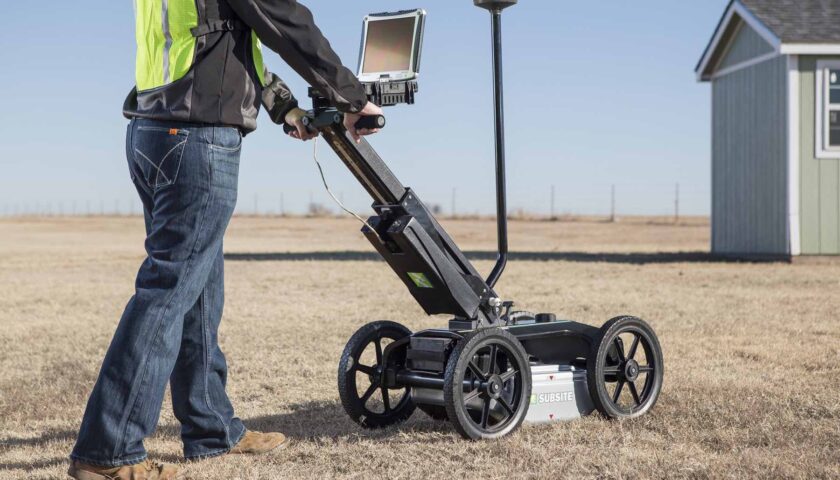Living in an area prone to high winds and hurricanes means taking steps to protect your home and family. A wind mitigation inspection is a thorough assessment of your home’s structure and components to identify and address vulnerabilities. This allows you to reinforce and retrofit your home to better withstand strong winds and reduce the potential for damage.
A comprehensive wind mitigation inspection evaluates all aspects of your home to provide a complete picture of its wind resistance. Here are some of the key components included in a robust wind inspection.
Roof Covering
Your roof’s covering is your first line of defense against wind and plays a critical role in a wind mitigation inspection. The inspector will examine:
- Roof covering type: Asphalt shingles, metal panels, tile, etc. Some materials hold up better than others in high winds.
- Roof age and condition: Old, worn, or damaged shingles are more vulnerable to blow-off. The inspector will look for aging, cracks, tears, and lifted edges.
- Attachment method: Nails, clips, adhesive, etc. Proper fastening is essential to prevent roof covering lift.
- Presence of a secondary water barrier: This provides a layer of protection if the roof covering fails.
- Flashing details: Flashings around roof protrusions should be well-sealed to prevent uplift.
The inspector will also check for signs of prior wind damage and repairs. Their roof examination aims to determine how well the roof covering can resist uplift pressure and debris impacts from winds.
Roof Deck Attachment
The roof deck underneath the roof covering plays an important role in roof strength. The inspector will check:
- Roof deck material: Plywood, OSB (oriented strand board), wood planks, etc.
- Thickness and grade of decking: Thicker, higher-grade panels are more wind-resistant.
- Edge support and attachment: Roof deck edges must be properly supported and secured.
- Fastener type and spacing: Proper nail size, spacing, and attachment to roof framing is crucial.
- Presence of hurricane clips/straps: These provide uplift resistance at key connections.
Proper installation and attachment of the roof deck ensures the roof stays intact in high winds. The inspector examines these factors closely.
Roof-to-Wall Connections
One of the most vulnerable areas is where the roof framing attaches to the exterior walls. The inspector will look for:
- Connection details: Metal hurricane clips, straps, or brackets provide a stronger roof-to-wall link than conventional toe-nailing.
- Fastener type, size, and spacing: Proper fasteners at close intervals enhance uplift resistance.
- Wall anchoring: continuous load path ties walls to foundation.
- Presence of anchor bolts/straps: These strengthen the roof-to-wall connection.
- Condition of connections: Signs of corrosion or damage can compromise structural integrity.
Proper uplift connections between the roof and walls keep the roof securely in place during high winds. The inspector examines these critical structural connections.
Exterior Covering
The exterior walls bear the brunt of wind pressure and debris impacts. The inspector looks at:
Wind Mitigation Inspection
- Exterior covering type: Common materials like vinyl, wood, stucco, and brick handle wind differently.
- Condition: Cracks, spalling, or deterioration can lead to failures when wind forces infiltrate the exterior.
- Attachment method: Nails, screws, clips, adhesive, or mortar joints. Proper fastening prevents covering detachment.
- Flashing details: Joints and openings should be properly flashed and sealed.
- Presence of exposed/vulnerable fasteners or end grain: These can weaken connections if not properly treated.
The goal is to determine if the exterior covering can adequately withstand wind loads and prevent water intrusion. Durable, well-attached exteriors protect the structure.
Opening Protection
Doors and windows are vulnerable to wind damage and water infiltration if not properly protected. The inspection evaluates:
Wind Mitigation Inspection
- Window/door type and condition: Impact-resistant systems provide the best protection. Inspect for aging, damage, or weakness.
- Protection systems: Impact-resistant shutters, panels, film, etc.
- Attachment method of protection devices: Must be properly secured for effectiveness.
- Presence of water intrusion barriers: Flashings, sealants, and drainage systems.
Adequate opening protection prevents costly damage to the home’s envelope. The inspector will identify any unprotected areas or weaknesses.
Attached Structures
Any structures attached to the home can become hazards in a storm if not properly evaluated. The inspector will look at:
- Roof attachment: Roofs of attached structures must be well-connected to withstand uplift.
- Wall connections: Attachment points to the home should be durable and reinforced.
- Structural integrity: Inspect for signs of damage, deterioration, or modification.
- Exterior covering: Siding and roofing must be in good repair.
Attached structures like garages, patios, and porches are included in the inspection to avoid overlooked vulnerabilities.
Load Path/Structural Continuity
The “load path” refers to the continuity of structural connections that allow wind forces to transfer from the roof, down the walls, and into the foundation. A break or weakness anywhere in this path can lead to structural failure. The inspector looks for:
- Connection of walls to foundation: Walls must be securely attached with anchor bolts, embedded straps, or similar.
- Reinforcement at wall openings: Areas with doors, windows, etc. need lateral bracing.
- Presence of hurricane clips/straps: These strengthen critical connections.
- Signs of alterations/deterioration: These can disrupt structural integrity.
- Proper tying of building elements: Floor diaphragms, shear walls, and roof must intertie.
Verifying the integrity of the load path is possibly the most important component of the inspection. The goal is to identify and address vulnerabilities before they lead to structural failures.
Electrical and Mechanical Equipment
Loose or unreinforced electrical and mechanical equipment can become damaging windblown debris. The inspection looks for:
- Attachment of roof-mounted equipment: HVAC units, skylights, vents, etc.
- Condition of exterior equipment: Signs of corrosion or damage that can cause failures.
- Support/attachment of utilities: Gas lines, power mast, cables, satellite dishes, etc.
- Protection of seaward equipment: Equipment facing the ocean is more prone to wind damage from salt spray and sand.
Properly installed, supported, and protected utilities and equipment are less likely to be compromised during high-wind events.
Water Intrusion Prevention
Wind-driven rain is a major cause of interior damage during hurricanes. The inspection evaluates:
- Presence of water barriers: Flashings, sealants, wraps, drainage planes, etc.
- Grading and drainage: Site should direct water away from the structure through proper slopes.
- Condition of penetrations/connections: Plumbing, wiring, and pipe penetrations into the walls and roof should be well-sealed.
- Susceptible materials: Avoid excess exposed wood and absorbent insulation in vulnerable areas.
- Ventilation: Attics and crawl spaces should have proper, protected ventilation to dry if moisture enters.
Keeping wind-driven rain out of the home’s vulnerable points is key to reducing interior damage. Adequate water intrusion prevention is essential.
Garage Doors
Large garage doors are often damaged by high winds, allowing destructive pressure into the garage and home interior. The inspection looks at:
- Garage door type: Rolled steel or layered aluminum doors provide the best wind resistance.
- Impact rating: Doors are rated to withstand various wind speeds and impacts.
- Construction: Thicker metal resists damage better than thin metal or Wood doors.
- Windows: Glass garage doors and windows are more vulnerable than solid panels.
- Weatherstripping: Prevents air and water infiltration around the edges.
- Wind load anchors: Anchor doors properly to the wall framing to resist uplift.
- Braces: Brace both single- and double-car garage doors at the center joint for added reinforcement.
Protecting garage doors from failure ensures wind forces do not over pressurize the garage and damage the structure.
Other Vulnerable Areas
In addition to the major components above, the wind mitigation inspection examines other areas prone to wind damage, including:
- Exposed/unbraced eaves and overhangs
- Unsealed crawlspace vents
- Unprotected under-deck spaces
- Loose siding and trim
- Inferior materials in vulnerable regions
- Areas exposed to the full force of wind
A comprehensive inspector will check every potential vulnerability to make the home as wind-resistant as possible.
Why a Wind Mitigation Inspection Matters
A professional wind mitigation inspection provides tremendous value for homes in wind-prone regions. It provides a complete assessment of the home’s ability to withstand extreme winds, reducing the potential for costly damage.
The inspection report serves as an action plan to address vulnerabilities before the next storm strikes. It also provides documentation of the home’s wind resistance which can lead to significant savings on wind insurance premiums.
Homeowners who take steps to exceed minimum wind building codes can receive discounts from insurers in many coastal states who reward proactive wind protection measures. The inspection report is proof of steps taken to strengthen the home.
A comprehensive, professional wind mitigation inspection gives homeowners confidence their family and home are properly prepared to withstand the unique dangers posed by hurricanes and tropical storms. It is one of the wisest investments owners of wind-vulnerable properties can make.
Finding a Qualified Wind Inspector
It takes an experienced, knowledgeable inspector to thoroughly evaluate all the complex factors that affect a home’s wind resilience. Look for an inspector who:
Wind Mitigation Inspection- Is properly certified as a windstorm inspector in your state. Certification proves comprehensive training.
- Has in-depth, hands-on experience inspecting homes for wind mitigation. Look for an inspector with a proven track record over many years.
- Uses professional-grade reporting software providing comprehensive documentation required by insurers.
- Provides an extremely detailed inspection report outlining every aspect evaluated. Vague, generic reports are insufficient.
- Gives recommendations to improve wind resistance and reduce insurance premiums. The best inspectors act as trusted advisors.
- Has strong relationships and credibility with local insurers to maximize insurance discounts.
A qualified wind inspection specialist is well worth the investment for the enhanced safety, insurance savings, and peace of mind they provide. They offer invaluable guidance to prepare your home for the inevitable next big storm.
Conclusion
Wind mitigation inspections evaluate every aspect of a home’s design, construction, and integrity to determine its ability to withstand extreme winds. A comprehensive inspection examines the roof structure, exterior coverings, openings, attachments, load paths, utilities, and more.
Addressing vulnerabilities identified in the inspection report greatly reduces the potential for costly wind damage. It also rewards homeowners with significant savings on wind insurance premiums for proactive fortification.
Homeowners in hurricane-prone regions would be wise to invest in a professional wind mitigation inspection. A qualified inspector provides an invaluable map to strengthen your home against the wind and weather the storms ahead.





